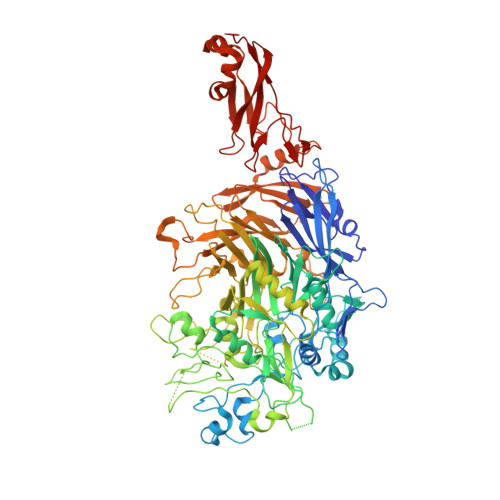Mycoplasma genitalium adhesin P110 binds sialic-acid human receptors.
Aparicio, D., Torres-Puig, S., Ratera, M., Querol, E., Pinyol, J., Pich, O.Q., Fita, I.(2018) Nat Commun 9: 4471
- PubMed: 30367053
- DOI: https://doi.org/10.1038/s41467-018-06963-y
- Primary Citation of Related Structures:
5OX7, 6R3T, 6R41, 6R43 - PubMed Abstract:
Adhesion of pathogenic bacteria to target cells is a prerequisite for colonization and further infection. The main adhesins of the emerging sexually transmitted pathogen Mycoplasma genitalium, P140 and P110, interact to form a Nap complex anchored to the cell membrane. Herein, we present the crystal structures of the extracellular region of the virulence factor P110 (916 residues) unliganded and in complex with sialic acid oligosaccharides. P110 interacts only with the neuraminic acid moiety of the oligosaccharides and experiments with human cells demonstrate that these interactions are essential for mycoplasma cytadherence. Additionally, structural information provides a deep insight of the P110 antigenic regions undergoing programmed variation to evade the host immune response. These results enlighten the interplay of M. genitalium with human target cells, offering new strategies to control mycoplasma infections.
Organizational Affiliation:
Instituto de Biología Molecular de Barcelona (IBMB-CSIC) and Maria de Maeztu Unit of Excellence, Parc Científic de Barcelona, Baldiri Reixac 10, 08028, Barcelona, Spain.



















